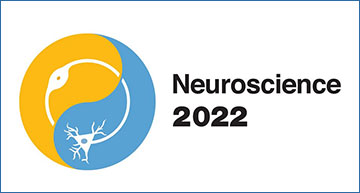Powerful tools have the potential to assess the dynamic, changing brain
Researchers are developing a cell atlas — a comprehensive reference of all cell types, including their location, shape, and distribution — for the human brain. The findings were presented at Neuroscience 2022, the annual meeting of the Society for Neuroscience and the world’s largest source of emerging news about brain science and health.
Having a complete cell atlas is critical for observing changes in the brain, such as those caused by disease. A cell atlas for the entire mouse brain, which covers around 100 million cells, was recently developed. Now, the aim is to create an atlas for the non-human primate and human brain, which would cover billions of cells. As the non-human primate and human brains are particularly complex, researchers have developed advanced visualization techniques to catalog brain regions and cell types.
Today’s new findings show that:
- Scientists extended the potential of super-resolution shadow imaging (SUSHI) by using 2-photon shadow imaging (TUSHI) to visualize the micro-anatomical organization of the mouse brain in vivo. (U. Valentin Nägerl, University of Bordeaux/CNRS)
- Scientists created a molecularly defined, spatially resolved mouse brain cell atlas via multiplexed error-robust fluorescence in situ hybridization (MERFISH) measurements generated by the MERSCOPE
 platform. (Jiang He, Vizgen)
platform. (Jiang He, Vizgen) - Scientists presented a transcriptomic cell atlas across the whole mouse brain, integrating several whole-brain single-cell RNA-sequencing (scRNA-seq) datasets. (Zizhen Yao, Allen Institute for Brain Science)
- Akoya’s PhenoCycler-Fusion platform used an advanced imaging technique to map cellular populations with significantly greater clarity and precision. (Oliver Braubach, Akoya Biosciences)
- CUBIC (clear, unobstructed brain/body imaging combination and computational analysis) methodology found more than 400 million cells across a newborn mouse’s whole-body atlas. (Hiroki R. Ueda, RIKEN Center For Biosystems Dynamics Research)
“Ultimately the different data sets generated by different methods can be integrated together to provide a comprehensive description of the different properties of the cells that can go into the same cell atlas,” said Hongkui Zeng, director of the Allen Institute for Brain Science in Seattle. “Ideally, in the end, we’re all converging into the same system to make a holistic, complete cell atlas.”
This research was supported by national funding agencies including the National Institutes of Health and private funding organizations. Find out more about mapping the brain on BrainFacts.org.
Press Conference Summary
– Each presentation showcases powerful new tools to investigate the nervous system’s complexity. Each tool allows researchers to achieve better resolution or accuracy in their studied neural circuits.
Brain Micro-Anatomy Revealed by 2-Photon Shadow Imaging In Vivo
U. Valentin Nägerl, [email protected], Abstract 577.21
- Super-resolution shadow imaging (SUSHI), which is based on imaging the extracellular space that surround all brain cells, made it possible to visualize the complex anatomy of living brain tissue with nanoscale spatial resolution.
- Scientists have now extended the shadow imaging concept to the mouse brain in vivo based on 2-photon shadow imaging (TUSHI) and cerebrospinal fluid labeling.
- The new approach opens a window to the in vivo micro-anatomical organization of the brain: cell bodies, dendritic branches, perivascular spaces, and spatial heterogeneities of the extracellular space.
Analyzing the Molecular Basis Underlying Anatomic and Functional Complexity of the Mouse Brain With MERSCOPE
Jiang He, [email protected], Abstract 083.03
- The rapid development of spatially resolved genomic assays enables molecular-level tissue analysis, with the potential to reveal how single-cell gene activity leads to the structure and function of the nervous system.
- Scientists demonstrated the use of the MERSCOPE
 Platform to generate a transcriptionally defined, spatially resolved single-cell mouse brain atlas. By performing multiplexed error-robust fluorescence in situ hybridization (MERFISH) assays, they obtained over one million cells with precise gene expression and spatial information along the anterior-posterior axis of the brain.
Platform to generate a transcriptionally defined, spatially resolved single-cell mouse brain atlas. By performing multiplexed error-robust fluorescence in situ hybridization (MERFISH) assays, they obtained over one million cells with precise gene expression and spatial information along the anterior-posterior axis of the brain.
A Whole Mouse Brain Transcriptomic Cell Type Atlas
Zizhen Yao, [email protected], Abstract 684.04
- Scientists presented a transcriptomic cell-type atlas across the entire mouse brain, integrating several whole-brain single-cell RNA-sequencing (scRNA-seq) datasets and annotating the anatomical location of each cell type by using brain-wide MERFISH datasets.
- They generated a comprehensive neurotransmitter and neuropeptide distribution map in the cell-type atlas and provided a comprehensive characterization of both neuronal and non-neuronal cell classes and types across the mouse brain.
Highly-Multiplexed Single Cell Spatial Biology for Neuroscience Research
Oliver Braubach, [email protected], Abstract 083.01
- Akoya’s PhenoCycler-Fusion platform employs highly multiplexed immunofluorescence imaging to visualize more than one hundred biomarkers in a single tissue sample at single-cell and subcellular resolution.
- This technique is now being deployed to map cellular populations in normal and diseased brains with greater clarity and precision.
Whole Organ/Body Atlas of Mouse With a Single-Cell Resolution
Hiroki R. Ueda, [email protected], Abstract 083.23
- Tissue clearing methods used by CUBIC (clear, unobstructed brain/body imaging combination and computational analysis) have recently made it possible to view the entire adult mouse brain with single-cell resolution to construct organ atlases.
- Scientists found more than 400 million cells across a newborn mouse’s whole-body atlas. This atlas helps scientists determine how cells in an organ have changed in relation to chronic diseases and medication.
Source – Eurekalert




